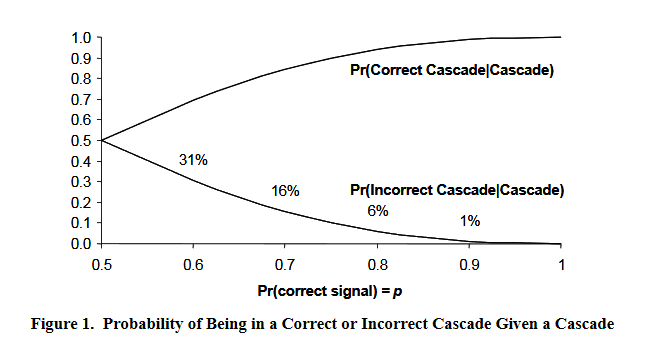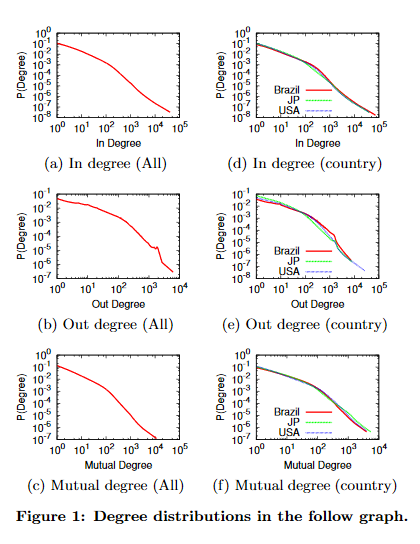Ashton made a great introduction to information cascades and their relevance in networks with competing ideas. However, another side to information cascades is how sensitive they are to introduced changes and relevance on prior information. Information cascades tend to occur when the result or effectiveness of a certain idea/product is more closely associated with a private value and popularity than on well known information. A great example of such a situation is evaluating the quality of technology: more people adopting it benefits the technology’s ratings than the actual rating of the technology relative to its competitors. Although a device/program may not be the best, if it’s good enough and well rated, it attracts more customers and thus, more ratings. Rinse and repeat.
A paper I read (see below for references), illustrates both presence and fragility of incorrect fads well. To put things in a simplified model, assume that a group of people need to draw from a bag and pull a red or blue marble. The bag can either have 2 red and 1 blue or 2 blue and 1 red (50% chance each This is done privately and the marble is then replaced. They then must publicly declare a colour of marble that they drew, but there’s a catch: if they declare the colour of marble that is the same as the majority of participants, they get a prize. Each participant does this one after the other and future participants see the previous participants’ declarations.
The first person who draws a marble simply declares the marble they draw. However the second and third individuals act differently. If there is a majority out of colours drawn, they will declare that colour, if not, they will default to declaring their own colour. From fourth person onwards, they are incentivized to declare the colour currently in the majority regardless of what colour they draw (and there will always be a strict majority if all participants follow this rational logic). This effectively forces an information cascade.

This means however, that participants also have a chance of creating an incorrect information cascade. This is the issue in the simplified model: it’s where declaring the choice of colour (or technology) you use to be strongly coupled with the actual quality of that choice. Thus, sometimes, whichever technology fad is first (and of sufficient quality) will prevail. This is in the case for Microsoft products, the qwerty key board and many household-named products.
Fragility of Incorrect Fads
Fortunately technology is ever improving, and if a product ever becomes of poor enough quality, users of that technology will deviate. This also similarly applies if you people openly declare that they are opposed to the technology they have used, but only do so for the majority’s sake. A key to breaking fads is the transparency in the rating and evaluation of products. In fact, this applies in the simple model with marbles. If each participant also publicly disclosed which marble they drew, they would all be incentivized to choose the more common marble regardless of other declarations.
In closing, the best quality and choice of technology (and any comparative decision) hinges heavily on the transparency and reliability of ratings of either choices. Unfortunately, marketing, business contracts and certain standardizations make this particularly difficult. This means that you’ll need to depend heavily on your private evaluation of a product and your intuition of public information.
http://citeseerx.ist.psu.edu/viewdoc/download?doi=10.1.1.231.3280&rep=rep1&type=pdf


